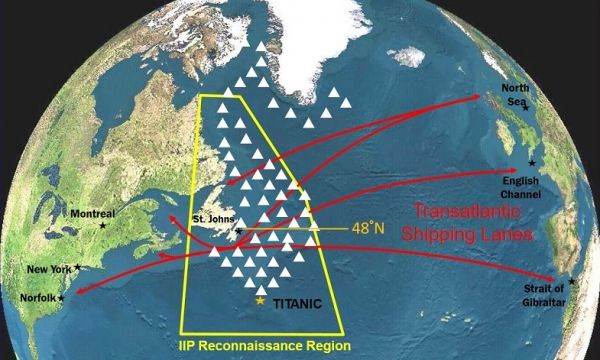This year will see a relatively low number of icebergs drifting into busy shipping regions in the north-west Atlantic, according to a combination of control systems and artificial intelligence forecasting models developed by experts at the University of Sheffield. A recently published control systems model has been used to predict that between 479 and 1,015 icebergs will reach waters south of 48°N – the area of greatest risk to shipping travelling between Europe and north-east North America – in 2020, compared with 1,515 observed there last year.
In an innovative new model approach, the team have used experimental artificial intelligence analysis to independently support the low iceberg number prediction while also predicting a rapid early rise in the number of icebergs in this area during the ice season of January to September. The findings are supplied to the International Ice Patrol (IIP) to inform resource use for better regular ice forecasts during the season. The seasonal forecast suggests that the probability of an iceberg encounter for ships in the north-west Atlantic will be less than it was last year.
Icebergs have long been a risk to shipping in the north-west Atlantic, with records of collisions and sinkings stretching back into the 17th century. The infamous sinking of the Titanic in 1912 led to the formation of the IIP, which is tasked with observing sea ice and icebergs in the north-west Atlantic and warning shipping of ice hazards.
Continue reading at University of Sheffield
Image via University of Sheffield


